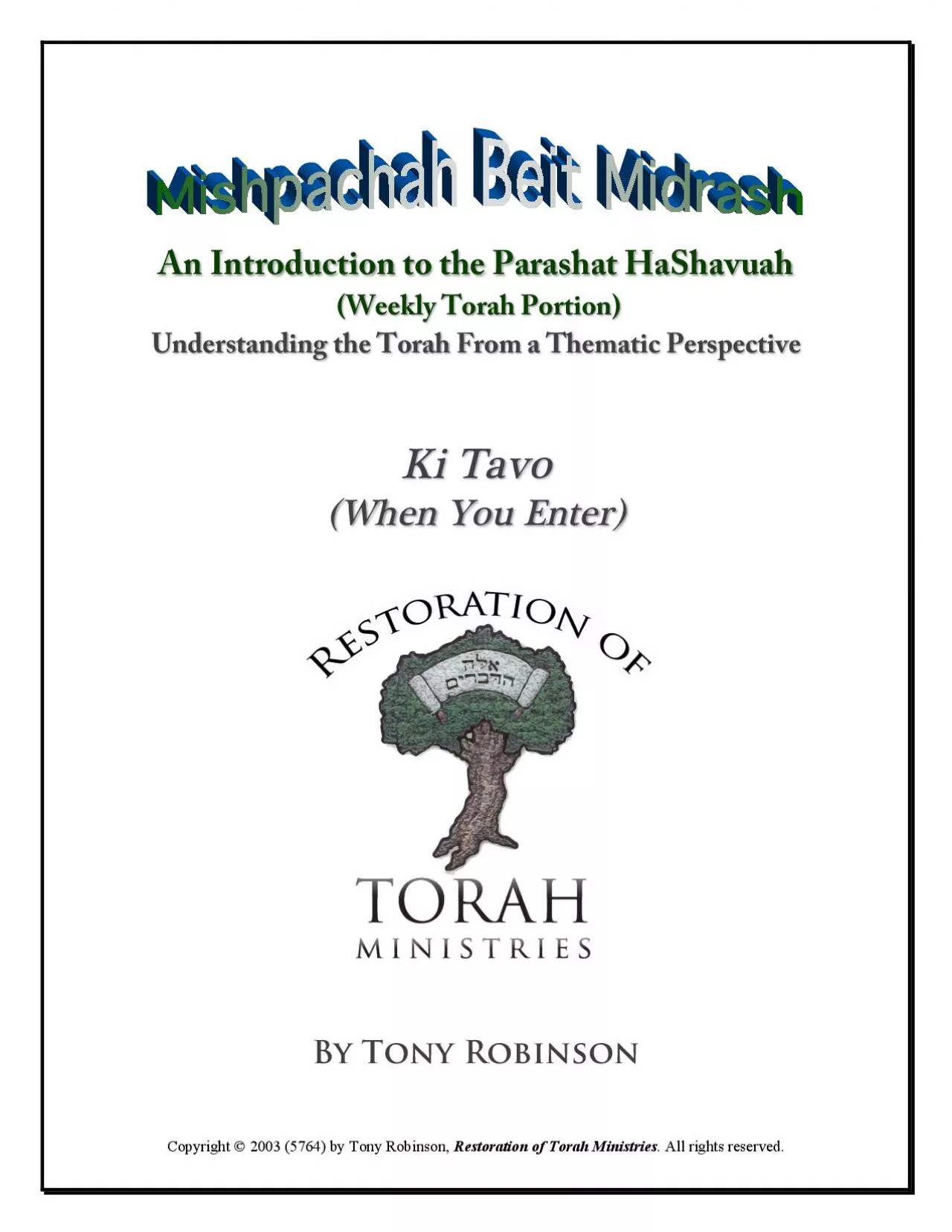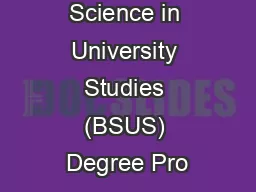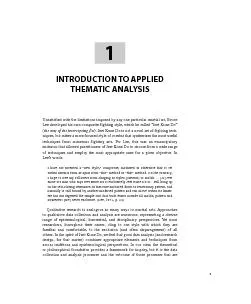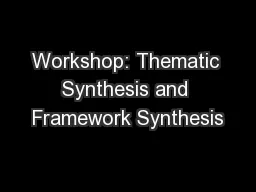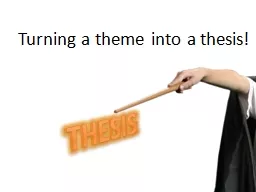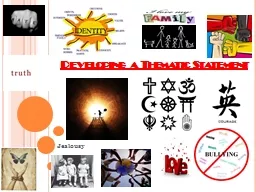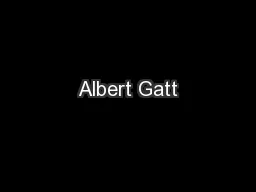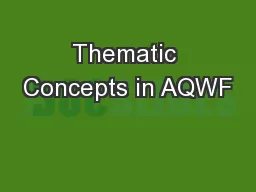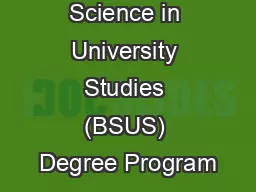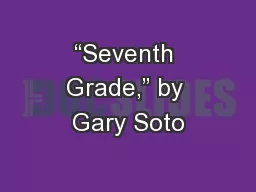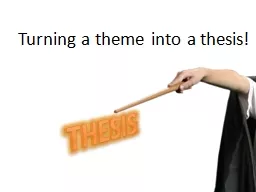PDF-havuah by Thematic A
Author : madeline | Published Date : 2021-04-14
19 serve as an appropriate concluding statement for the second portion of Moses speech involving the statutes chukim and judgments mishpatim Note how the first half
Presentation Embed Code
Download Presentation
Download Presentation The PPT/PDF document "havuah by Thematic A" is the property of its rightful owner. Permission is granted to download and print the materials on this website for personal, non-commercial use only, and to display it on your personal computer provided you do not modify the materials and that you retain all copyright notices contained in the materials. By downloading content from our website, you accept the terms of this agreement.
havuah by Thematic A: Transcript
Download Rules Of Document
"havuah by Thematic A"The content belongs to its owner. You may download and print it for personal use, without modification, and keep all copyright notices. By downloading, you agree to these terms.
Related Documents

